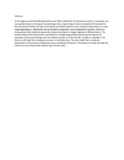| dc.contributor.author | Mudida, Robert | |
| dc.contributor.author | Gil‐Alana, Luis A | |
| dc.contributor.author | Caporale, Guglielmo M | |
| dc.date.accessioned | 2015-03-20T06:44:04Z | |
| dc.date.available | 2015-03-20T06:44:04Z | |
| dc.date.issued | 2014 | |
| dc.identifier.citation | Caporale, Guglielmo Maria, Luis Alberiko Gil‐Alana, and Robert Mudida. "Testing the Marshall–Lerner Condition in Kenya." South African Journal of Economics (2014). | en_US |
| dc.identifier.uri | http://onlinelibrary.wiley.com/doi/10.1111/saje.12052/full | |
| dc.identifier.uri | http://hdl.handle.net/11295/81435 | |
| dc.description.abstract | In this paper we examine the Marshall–Lerner (ML) condition for the Kenyan economy. In particular, we use quarterly data on the log of real exchange rates, export/import ratio and relative (US) income for the time period 1996q1-2011q4, and employ techniques based on the concept of long memory or long-range dependence. Specifically, we use fractional integration and cointegration methods, which are more general than standard approaches based exclusively on integer degrees of differentiation. The results indicate that there exists a well-defined, cointegrating relationship linking the balance of payments to the real exchange rate and relative income, and that the ML condition is satisfied in the long run, although the convergence process is relatively slow. They also imply that a moderate depreciation of the Kenyan shilling may have a stabilising influence on the balance of trade through the current account without the need for high interest rates. | en_US |
| dc.language.iso | en | en_US |
| dc.title | Testing the Marshall–Lerner Condition in Kenya | en_US |
| dc.type | Article | en_US |
| dc.type.material | en | en_US |

